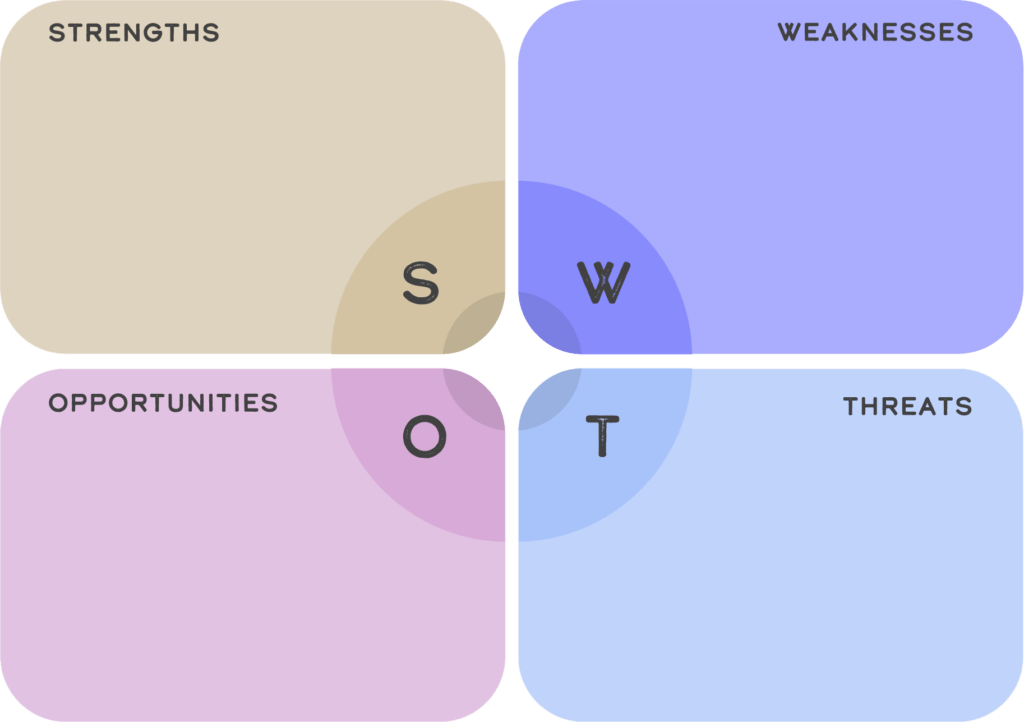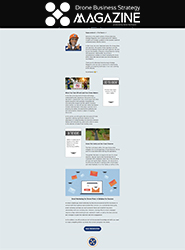
In the dynamic world of commercial drone operations, success hinges on more than just flying high. To thrive in this competitive landscape, commercial drone pilots need a strategic approach that enables them to make informed decisions, maximize efficiency, and ultimately enhance profitability. One such powerful tool in their arsenal is the SWOT analysis.
In this article, we’ll explore what a SWOT analysis is, why it’s essential for drone service agencies, and how to conduct one effectively. By the end, you’ll see how this strategic model can help you identify strengths, weaknesses, opportunities, and threats, leading to a more prosperous drone business.
Understanding the SWOT Analysis Components
The SWOT analysis is a strategic planning tool that helps individuals and businesses assess their current situation by examining four key factors: Strengths, Weaknesses, Opportunities, and Threats. Each of these factors provides valuable insights into various aspects of an organization’s internal and external environment. Here’s a breakdown of what each section of the SWOT analysis means:

1. Strengths (S):
- Definition: Strengths are internal factors that represent the positive attributes and capabilities of an organization. These are the things that an organization excels at or does exceptionally well.
- Examples: Skilled and experienced workforce, advanced technology, strong brand reputation, efficient processes, loyal customer base, unique products or services, financial stability.
2. Weaknesses (W):
- Definition: Weaknesses are also internal factors but represent areas where an organization falls short or faces challenges. These are aspects that need improvement or correction.
- Examples: Inadequate resources, lack of training, outdated technology, low employee morale, inefficient processes, high employee turnover, poor financial management.
3. Opportunities (O):
- Definition: Opportunities are external factors that can be leveraged to the advantage of the organization. These are potential avenues for growth, expansion, or improvement in the external environment.
- Examples: Emerging markets, changes in customer preferences, advancements in technology, new partnerships, relaxed regulations, untapped customer segments, favorable economic conditions.
4. Threats (T):
- Definition: Threats are also external factors and represent elements in the external environment that could negatively impact the organization. These are potential risks and challenges.
- Examples: Intense competition, economic downturns, changing regulations, natural disasters, cybersecurity threats, supplier issues, negative public perception, market saturation.
In summary, a SWOT analysis provides a comprehensive view of an organization’s current state by evaluating its internal strengths and weaknesses and examining external opportunities and threats. By understanding these factors, organizations can make informed strategic decisions, capitalize on their strengths, address weaknesses, seize opportunities, and proactively manage threats to achieve their goals and improve overall performance.
Section 1: Understanding SWOT Analysis
The Problem:
Many commercial drone pilots may not be familiar with the concept of a SWOT analysis and its relevance to their operations.
The Solution:
A SWOT analysis stands for Strengths, Weaknesses, Opportunities, and Threats. It’s a structured framework used to assess and evaluate internal and external factors that can impact a business. Commercial drone pilots should embrace this tool as it provides a holistic view of their business environment, enabling them to make informed decisions and strategies.
Section 2: Identifying Strengths and Weaknesses
The Problem:
Commercial drone pilots often struggle to objectively evaluate their strengths and weaknesses.
The Solution:
To conduct a SWOT analysis, start by identifying your internal strengths and weaknesses. Strengths could include specialized skills, cutting-edge equipment, or a strong client base. Weaknesses might encompass gaps in training, operational inefficiencies, or limited resources. By recognizing these internal factors, you can leverage your strengths and address your weaknesses effectively.
Section 3: Exploring Opportunities and Threats
The Problem:
Many drone pilots are so focused on day-to-day operations that they may overlook external opportunities and threats.
The Solution:
The external factors of a SWOT analysis involve identifying opportunities and threats in the broader industry and market. Opportunities may include emerging technologies, untapped markets, or new regulations favoring drone services. Threats could involve increased competition, changing regulations, or economic downturns. By keeping an eye on these external factors, you can adapt and capitalize on opportunities while mitigating potential threats.
Section 4: Crafting Strategies for Success
The Problem:
Without a SWOT analysis, commercial drone pilots may lack a structured approach to formulate strategies.
The Solution:
Once you’ve identified your strengths, weaknesses, opportunities, and threats, it’s time to craft strategies. Leverage your strengths to capitalize on opportunities, and work on mitigating weaknesses to reduce vulnerability to threats. This strategic alignment can help you make informed decisions about resource allocation, marketing, and growth initiatives.
Conclusion: The Takeaway
In the competitive world of commercial drone operations, success demands more than just piloting skills. A SWOT analysis is a practical and proven strategy model that empowers commercial drone pilots to assess their operations comprehensively. By understanding your strengths, weaknesses, opportunities, and threats, you can make informed decisions, maximize efficiency, and ultimately boost profitability.
Embrace the power of the SWOT analysis, and watch your drone service agency soar to new heights in this dynamic industry.
Be smart, safe, and forever fly!
If you have any questions, let us know! If you’d like to hire us, you can get more information here.
Written by: Tony Marino, MBA – FAA Certified Part 107 Commercial Drone Pilot and Chief Business Strategist at Aerial Northwest
Disclaimer: The information provided in this blog post is for general informational purposes only and should not be construed as legal advice.

DRONE BUSINESS STRATEGY MAGAZINE
A free digital publication made exclusively for all small business drone pilots to them help start-up, become profitable while sustaining a competitive advantage within the drone service industry sector they opt to serve.
“If you love to fly, we’d love to have you come aboard!”
We share your information with no one. Our Privacy Policy.









Leave a Reply
Your email is always safe with us.